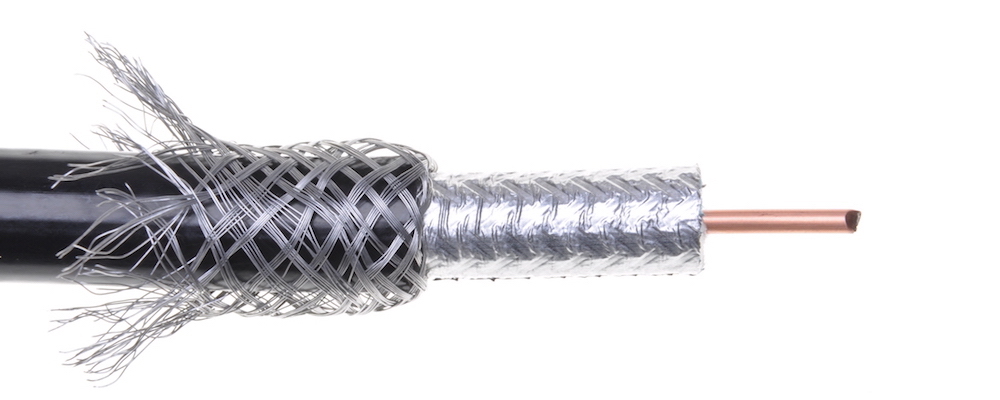Twisted Pair vs. Coaxial Cables

Business networks typically only use three primary types of cable for installation: coaxial cable, twisted pair cable, and optical fiber cable. Each type is unique in the way it functions, and one might be better suited than the other two depending on the intended use. Businesses primarily opt for coaxial cable over twisted pair wire cabling. Twisted pair cables may still be used for internal office networks because of their relatively low speed and cost. In this article, we take a look at coaxial cable vs. twisted pair cable in different office settings. If you have immediate questions regarding specific components for an upcoming installation, don’t hesitate to contact us.
The Differences Between Coaxial Cable vs. Twisted Pair
Both of these cables are used frequently in home and small-to-medium office installations. If you need something more substantial for heavy-duty use, you may need military-grade fiber optic cables. There are several major differences between twisted pair vs. coaxial cable. The following lists highlights the major contrasts and preferred uses for each:
- Cable installers typically prefer coaxial cable vs. twisted pair for TV and internet connections.
- When it comes to telephone connections, twisted pair vs. coaxial cable is the preferred product.
- Coaxial cables are ideal for extended-length sections during installations.
- Installers prefer twisted pair vs. coaxial cable when it comes to size and overall price, as twisted pair is generally much thinner.
- Twisted pair cables generate higher transmission rates.
What Are the Advantages of Coaxial Cables vs. Twisted Pair?
Even though coaxial cables are more expensive, they’re preferred for longer sections of installation because they provide more protection. This protection eliminates what’s known as crosstalk and other potential disruptions and slowdowns. During testing, coaxial cables have been proven to operate at speeds of up to 80 times higher than twisted pair cables. Because of this enhanced speed, coaxial cable is the preferred product for high-speed internet and other telecommunication applications.
What Are the Advantages of Twisted Pair vs. Coaxial Cables?
Although twisted pair cables operate at lower speeds, they are still found in widespread installations at telecommunications companies because of the much earlier date of adoption. In addition, twisted pair cables are much more cost-efficient on the front end and lead to fewer instances of lagging. For businesses that don’t make especially large amounts of calls, twisted pair vs. coaxial cables may be the most efficient and cost-effective option.
Choosing Between Twisted Pair and Coaxial Cables
Deciding on what type of cable to run for your office shouldn’t be a confusing or stressful ordeal. The decision comes down to a quick analysis of your installation space and business. If you plan on operating a high call-volume organization or require faster than normal internet, coaxial cables are probably your best option. However, if your number of calls is on the lower end and you run a smaller operation, twisted pair cables will likely do the trick.
Find the Cables You Need for Your Home or Office Network
Regardless of whether you need twisted pair or coaxial cables – or run a small or large operation, Gateway Cable Company has all the components you need to get the job done. From telecommunications to power distribution cables for commercial interiors, and even intervehicle power, we’re your go-to cable component and hardware resource. Know exactly what you need? Use our convenient quote request form on our website and we’ll get back to you momentarily!
